Rest assured the trees at 100 Aker Wood were untouched in the construction of this book.
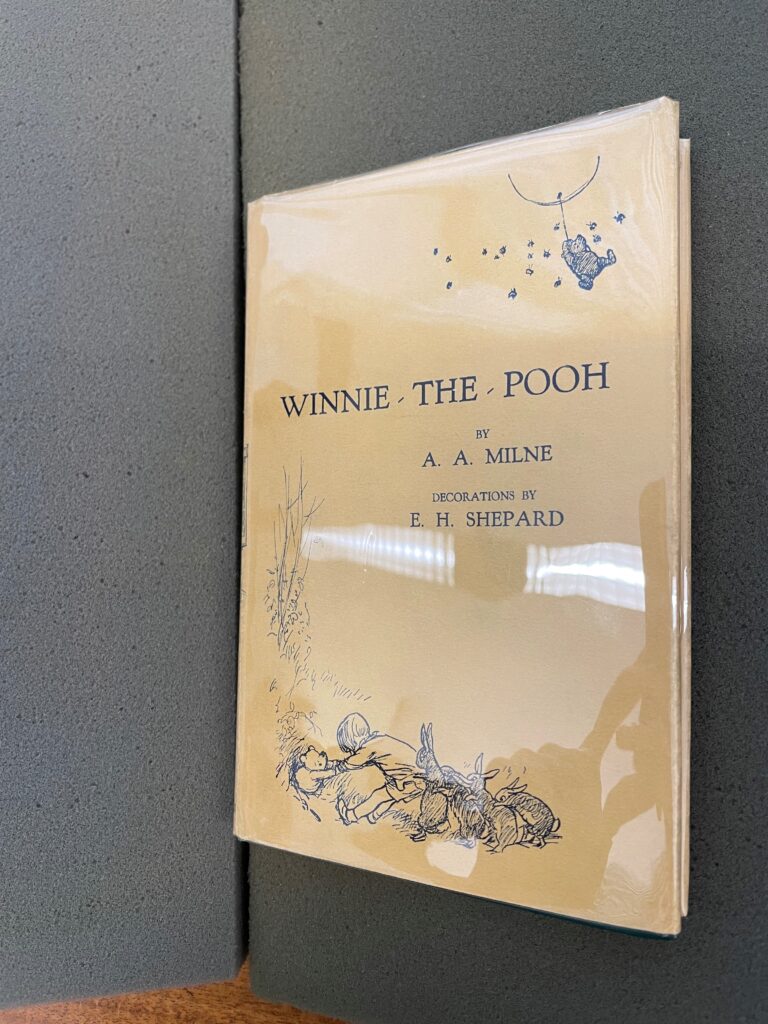
As Pooh Bear is one of my favorite childhood characters, I have recently adopted Winnie-the-Pooh by A.A. Milne, decorations by E. H. Shepard. The book is a first edition, published by Methuen in 1926, and part of the four-volume collection to which The House at Pooh Corner also belongs.

Wrapped in a plastic, beige-yellow dust jacket – a color quite similar to that of Pooh’s complexion – we see on the bottom left corner of the front cover a cute illustration of Christopher Robin and friends attempting to pull Pooh out of a hole in a tree – presumably Pooh’s house – and the illustration continues on the flip side, as the back cover shows us the bottom half of Pooh’s body diving into the bottom right corner of the book. I am looking forward to further exploring these seemingly transportive, interactive illustrations that occur throughout and alongside the text.
I believe the book is of case binding construction, given the hard boards that cover and enclose the pages, attached along the rounded spine. Smooth to the touch, I think the covers may be cloth; while they do not quite feel like what I imagine when I think of “cloth,” looking really closely at the material reveals a woven-like pattern resemblant of cloth. It is a lovely emerald green color and contains minimal gold tooling to illustrate Christopher Robin and Pooh on the front cover and write the book’s title, author, and publisher along the spine. Beautifully, the gold accent continues across the book’s materials, as the tops of the pages have gilded edges, noticeable when the book is closed. I am not quite familiar with the strategy required to produce this technique, and I wonder why the other two visible sides of the pages lack gilded edges. Perhaps the manner in which the paper was folded during imposition only allowed for certain edges to be dressed in this way?
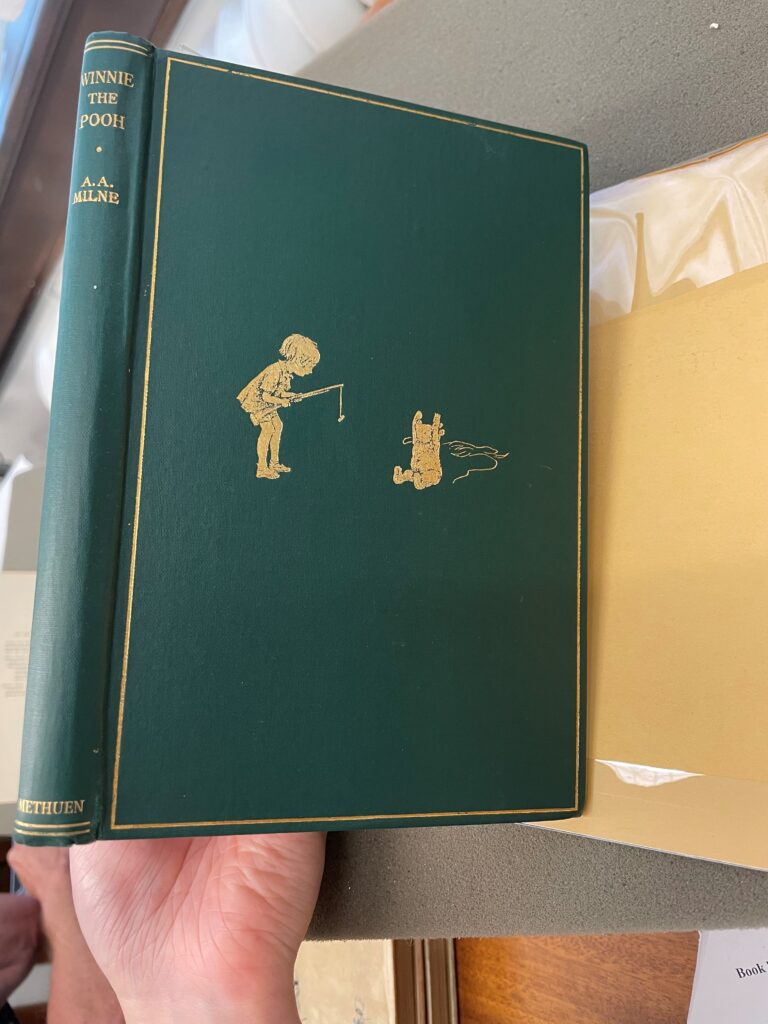
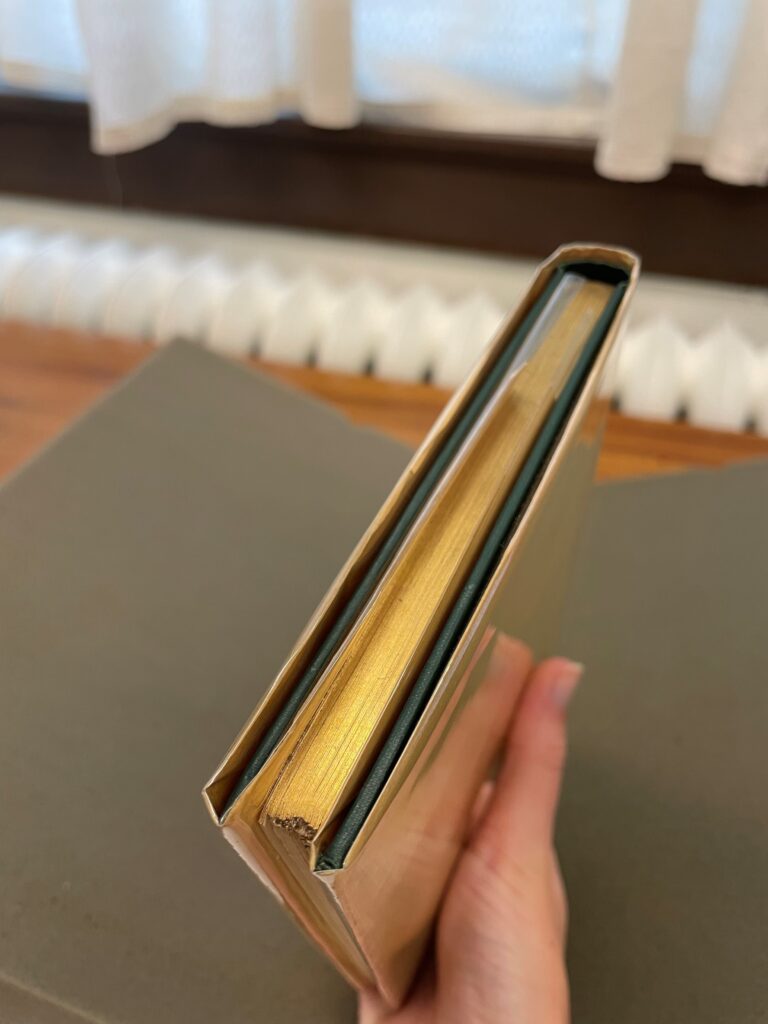
Twenty centimeters in length, the book might not be pocket size (at least not for my pockets), but it is certainly portable, easy to hold in your hand or pack in a bag. This is especially convenient for the small hands of children, for whom the book is intended. Brenna from Special Collections had informed me that the book is made from wove paper. Accordingly, I noticed that the pages are rather thin, smooth to the touch, and have a consistently soft, delicate way about them. When I placed my flashlight behind the page, I did not see any laid/chain lines. The edges had been cut cleanly, though I noticed the slightest bit of damage (perhaps water or heat) which wrinkled some pages’ corners. Additionally, I noticed that the edge of one page to the next did not line up in the most uniform manner – one may come up shorter than another – which I think is unlike contemporary novels produced with machine-driven accuracy. I think these little idiosyncrasies may suggest each copy has a bit of its own character.
As I scanned my eyes across the many illustrations in the book, I noticed some were drawn with more shading than others; none utilized color, as the text and illustrations alike were printed with black ink atop the white wove paper. For those with more shading, it was pretty cool to feel the raised ink lines of the image and be able to follow it with my finger.
Pagination is written in Arabic numerals, written on both the upper left corner of the left hand pages (verso) and the upper right corner of the right hand pages (recto), thereby containing 158 numbered pages. The “Introduction,” however, is paginated with Roman numerals at the bottom center of each page. At times, when a new chapter or a large illustration prevented the pagination from being expressed in its typical spot on the page, we will see it written in a smaller font beneath the illustration or chapter opening, like so:
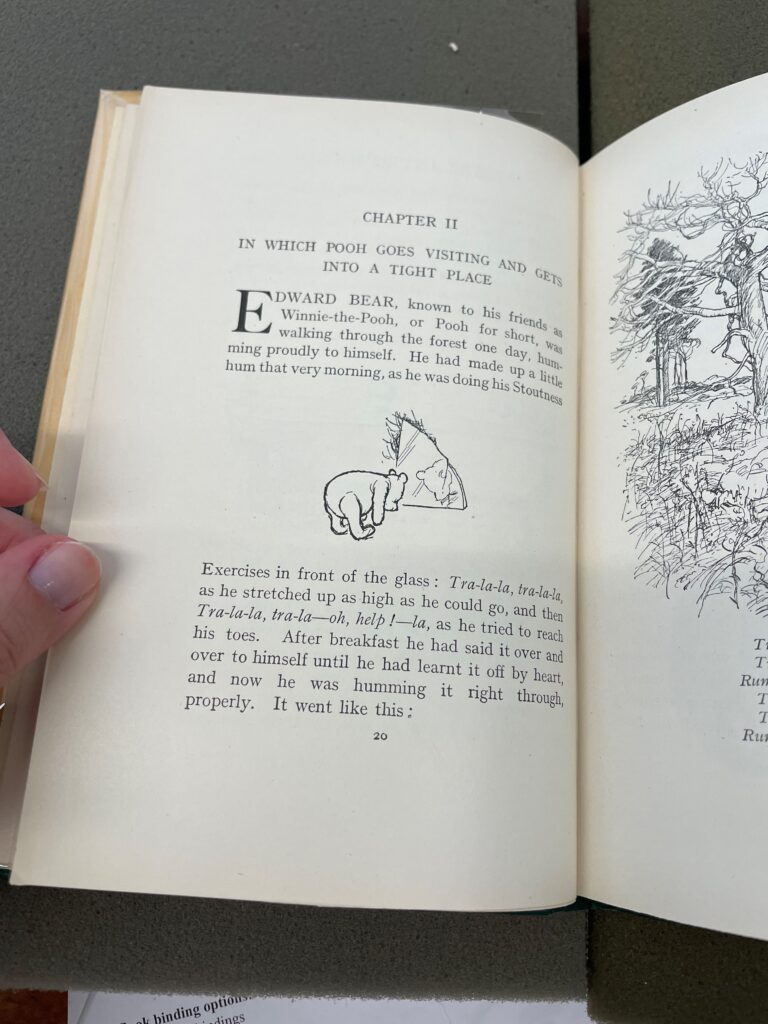
I noticed that some pages had numbers on them in a similar font and size to those like the photo above, yet they were not referencing the page number. Instead, these numbers were counting the book’s signatures. The final number written in this format is 10, indicating that the book contains 10 signatures. These signatures are separated by 16 pages, and these bundles of pages are certainly visible in the book’s form as the photo below shows. Given the size of this book, 20cm in length and just over 12cm wide, I believe the pages were folded and arranged in octavos, per the diagrams we referenced in class. As for how the pages were affixed, I am a bit torn between glue (and old age may have weakened its bond with the cover) or cords, as I thought maybe I saw a string running down the book about halfway through its 158 pages – unfortunately the iPhone camera could not quite capture what I saw.
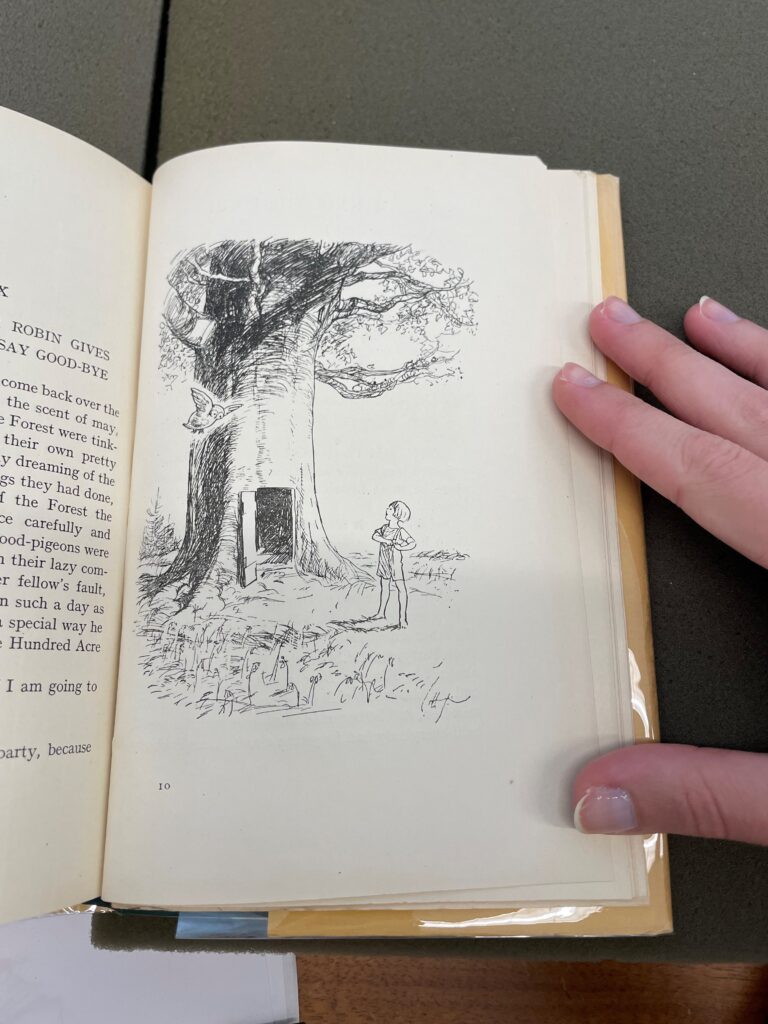
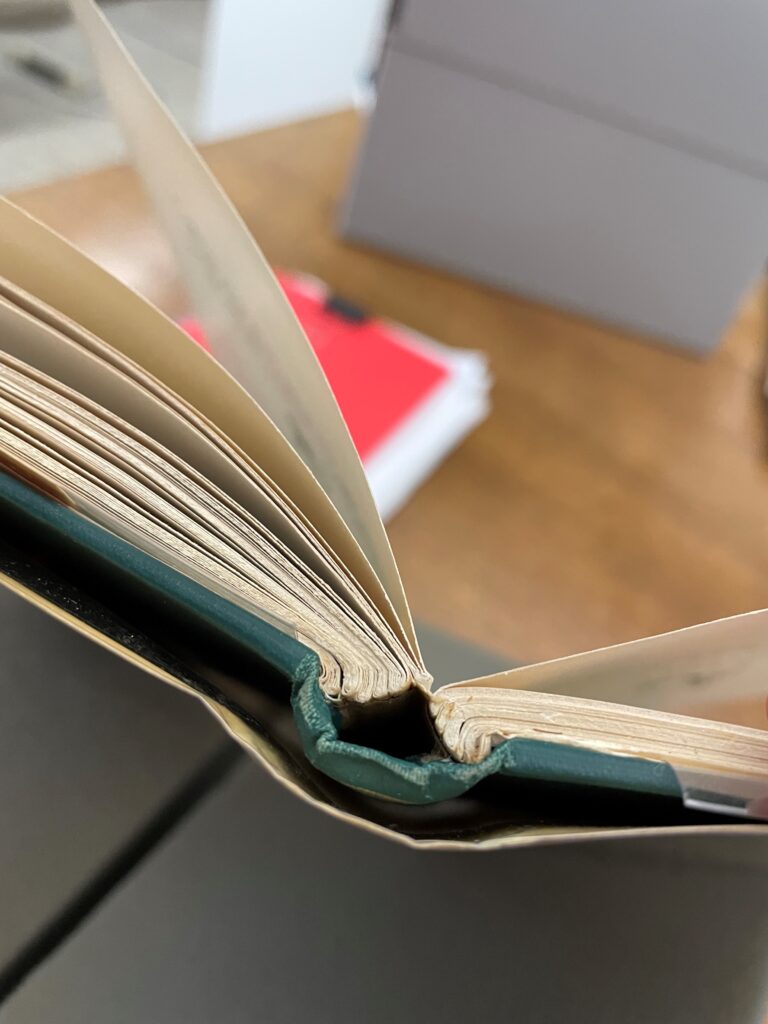
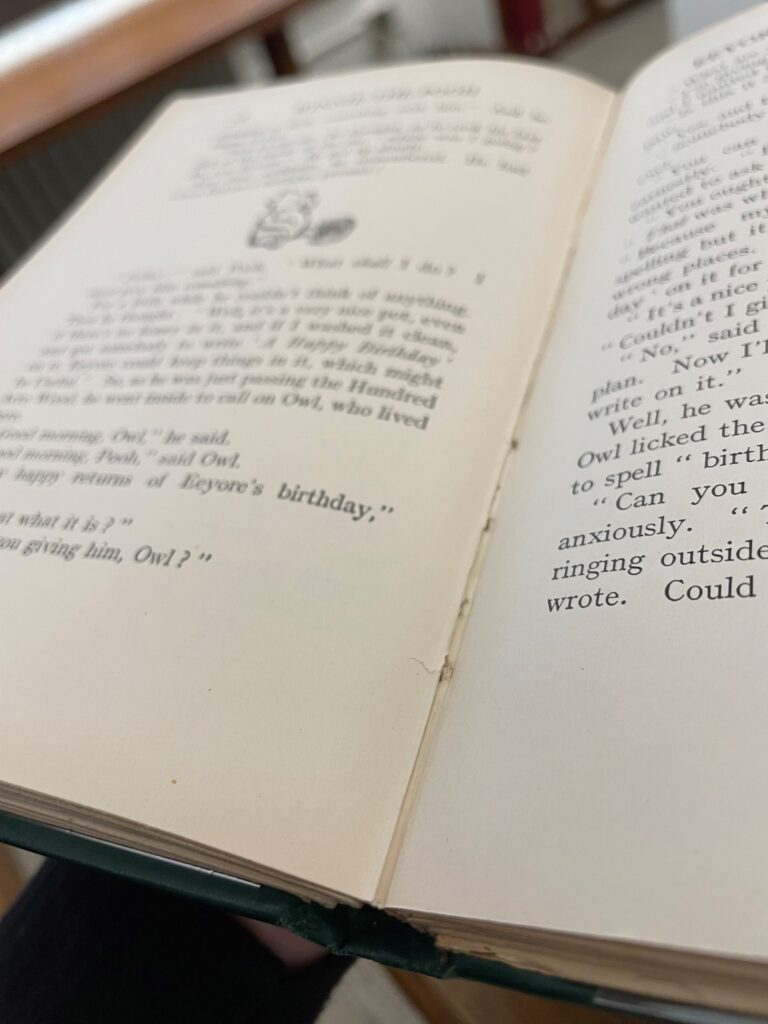
The book is in incredible condition almost 100 years after publication – makes me question if a child ever did own it. I am looking forward to exploring more of the stories it has to tell.
Physical Description: [12], 158 pages : ill. ; 20 cm (8vo) Note: the book contains 158 numbered pages, with 10 pages/endpapers unnumbered in the beginning and 2 at the end.
Signature Statement: i101-1016 xi2 Note: 1-10 indicates that there are 10 signatures, each including 16 pages. i indicates the 10 endpapers at the beginning of the book and xi refers to those 2 at the end. Roman numerals are used here as the Introduction of the text is paginated in Roman numerals. Second Note: I realize the math isn’t mathing here, given that the Physical Description sums 170 pages and my Signature Statement 172 – I’ll have to continue to ponder this.
Material Description: White wove paper with black ink used for the text and the illustrations. Cased in green cloth with gold tooling. 20cm x 12.7cm x 2.54cm. Printed By Jarrold and Sons LTD. Norwich. Published 1926 by Methuen.
Kindly,
Lexi
